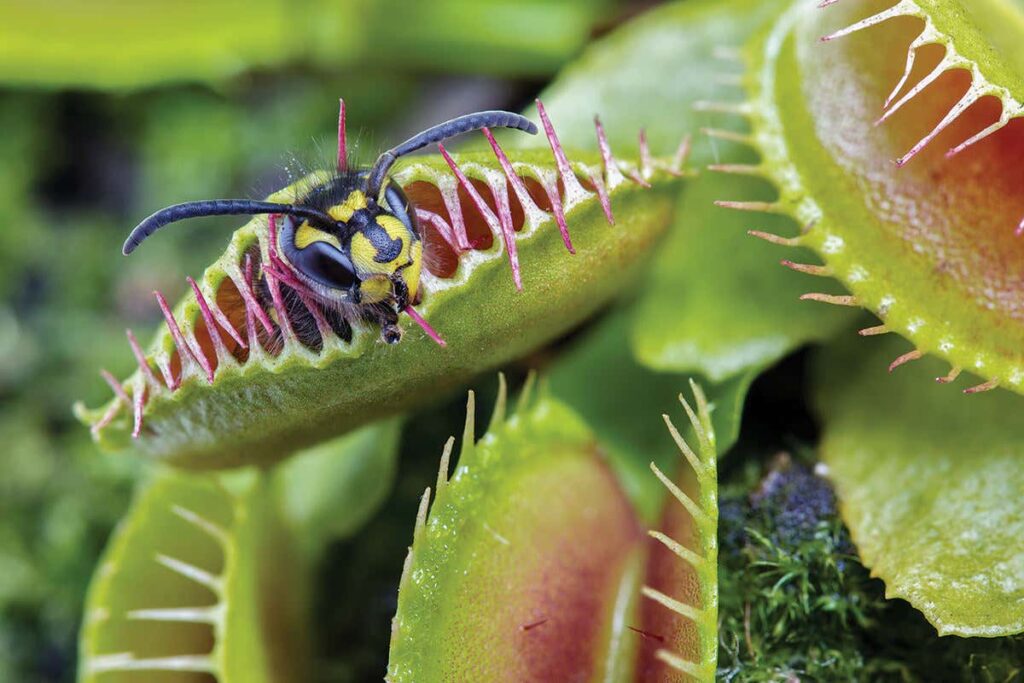Carnivorous plants are those plants that derive their nutrition from trapping and devouring animals, protozoans, or insects. The Venus Flytrap is one of the most iconic of the lot. But did you know they aren’t actually indigent to tropical regions?
The Venus Flytrap is only native to a region in North Carolina in the United States. People have the misconception that this plant is more commonly seen in the tropics but they grow in abundance within 120 kilometers from Wilmington.
All About the Plant
The Venus Flytrap or the Dionaea muscipula is a carnivorous flowering plant that is equipped with a trap. Two lobes are hinged at the end of each leaf and when the prey comes in contact with them, the lobes snaps shut and the plant starts to eat them.
The plant is endemic to the United States, specifically in North and South Carolina. They have gained popularity among plant collectors that they can be found all over the world. But because of this popularity, the Venus Flytraps’ population in the wild have significantly declined over the years.
Steph Jeffries, a professor at the Department of Forestry and Environmental Resources says that the plant is the only species in its genus. It used to be in its own family too, but taxonomists decided to move it to the Droseraceae family since they were closely related to sundews.
How Does a Venus Flytrap Eat?
Like most plants, the venus flytrap relies on photosynthesis to make their own food. The plant gets some of its nutrients from the soil, but added nutrition comes from the plant consuming other living things such as insects and arachnids. After a plant has eaten it takes about three to five days to digest their meal. In the wild, they may go through months between meals. (Source: National Wildlife Federation)
Does a Venus Flytrap Eat Their Pollinators?
In a study conducted by Elsa Youngsteadt and Clyde Sorenson, they were able to observe that the carnivorous plant would rarely trap their pollinators. Their diets rely on insects and arachnids like ants, beetles, grasshoppers, and spiders. (Source: The University of Chicago Press)
How Does One Take Care of a Venus Flytrap?
The plant thrives on moist and acidic soil, be sure to keep the soil moist but not overly wet that the root will start to rot. They prefer staying below canopies in the wild, by mimicking that kind of environment they will grow well. These plants love bright indirect sunlight. If you are planning to keep them indoors, having them by the window or any source of light will be the best. They are relatively low-maintenance, you don’t need to fertilize them, you just need to feed insects. (Source: National Wildlife Federation)
Are Venus Flytraps Endangered?
According to the National Wildlife Federation, the Venus Flytrap is internationally listed as vulnerable. However, the federal government is considering to list them under endangered species. The main reason they are in trouble is not just because of over collection, but also to the loss of their habitat. (Source: National Wildlife Federation)
Venus flytraps live in the wet, open longleaf pine savannas, which need frequent fires to keep the stands open. Without frequent fire, trees and shrubs begin to grow in these habitats, blocking smaller plants like the Venus flytrap from the sun they need. On top of this, longleaf pine forests only occupy 3% of their former extensive range throughout the Coastal Plain.
Steph Jeffries
(Source: College of Natural Resources News)
